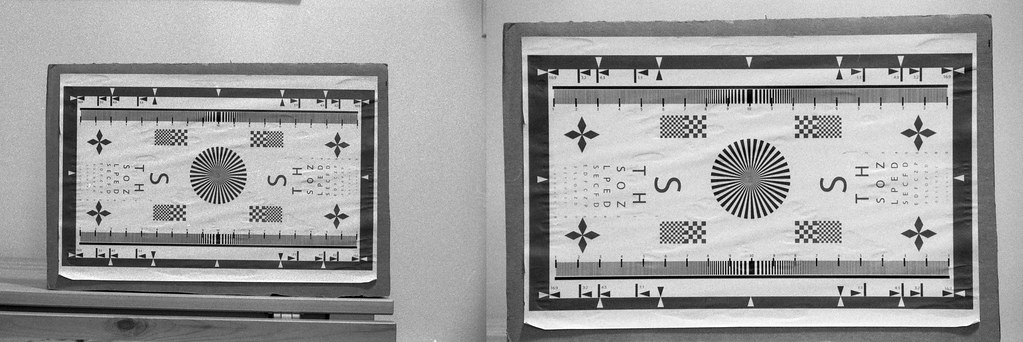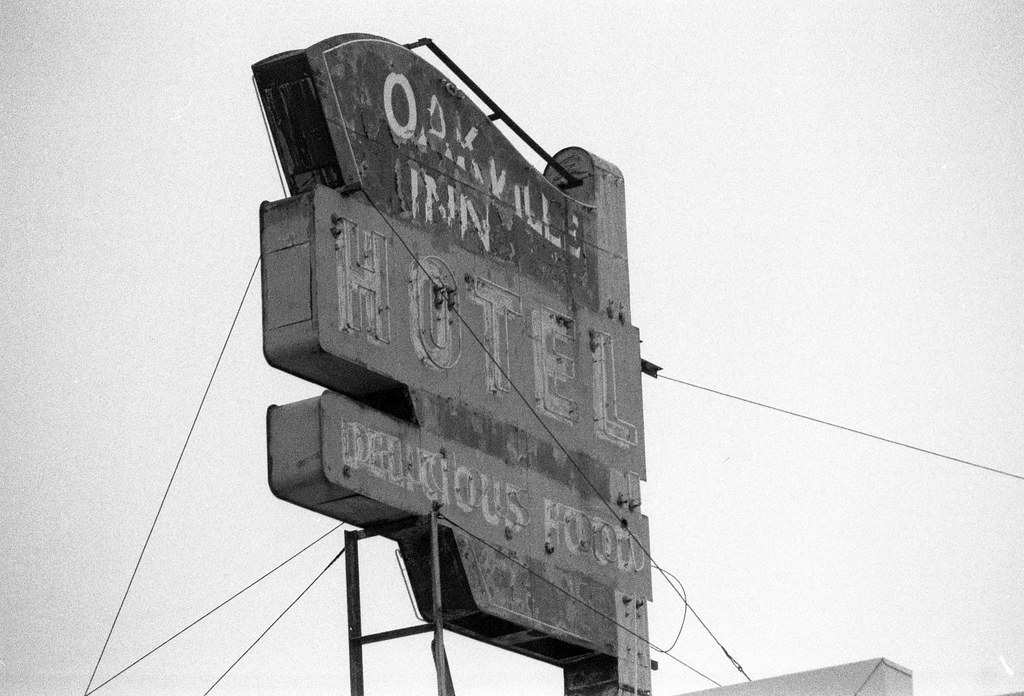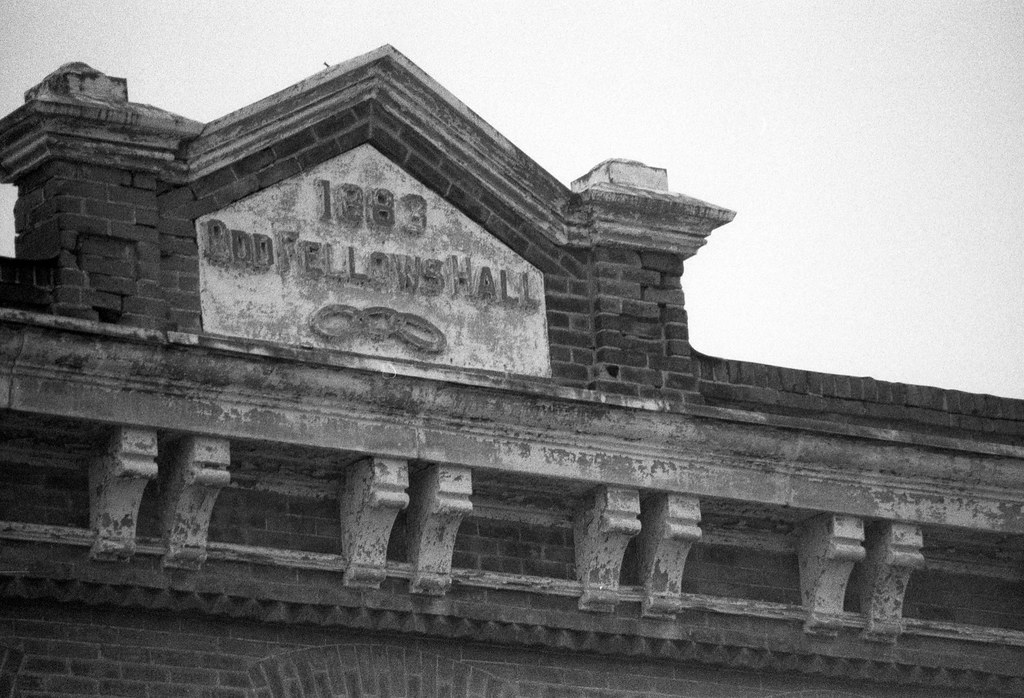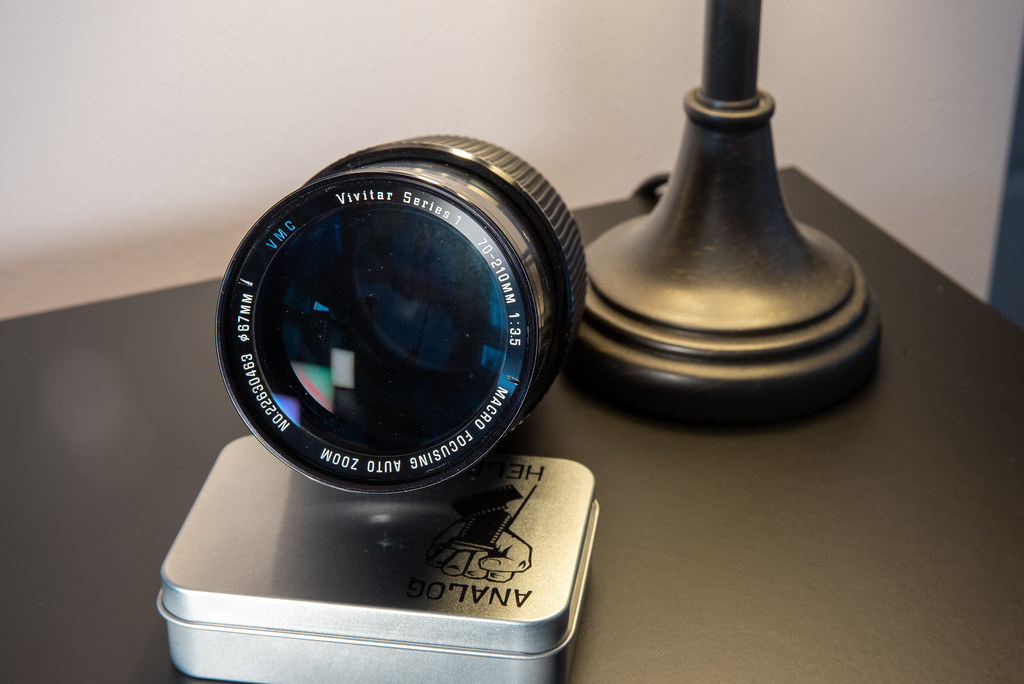Throughout these reviews, I have shied away from third-party lens makers. But I have a long history with third-party lenses and often with good results. My favourite lenses are from my first SLR system, the Minolta SR-T 102, a Kiron 70-150mm f/4 lens and a Vivitar 75-210mm f/3.5. Although that Vivitar is different from today, the Series 1 70-210mm f/3.5 in many ways. The biggest is the size and function; the Series 1 is a beast and a lens that surprised me that they even released the lens in an OM-Mount.
Lens Specifications
Make: Kiron
Model: Vivitar Series 1 70-210mm 1:3.5 Macro Focusing Auto Zoom
Focal Length: 70-210mm
Focal Range: ∞ – 1.95m
Aperture: f/3.5 – f/22, 6 Blades
Structure: 15 Elements in 10 Groups

Olympus OM-1n – Vivitar Series 1 70-210mm 1:3.5 – Ilford Delta 400 @ ASA-400 – Adox FX-39 II (1+9) 10:00 @ 20C
Build Quality
The Series 1 is a beast. It is big, heavy and will throw any camera off balance. And even more so, with an OM-System camera, which shows off their prowess as a fully-featured compact SLR system, the Series 1 is a mean match for the camera. Even if I attached a motor drive, it would not be enough to get that centre of balance back. You will want to keep that shutter speed to 1/250″ when working with the lens at the whole 210mm focal point. And given how the lens functions, I had difficulty hand-holding the lens with the OM-1n attached. First off, the lens features a push/pull zoom function (which can lead to bad jokes). Pulling the zoom towards you zooms in a while; pushing it away will zoom out. I find this counter-intuitive, although I can see why it moves the weight towards the camera when zoomed to 210mm. Although it also makes it difficult to set your focal length accurately. You also have to contend with lens creep when the lens is pointed down. The zoom slider also acts as your focus, and it is enormous! Sadly the focusing itself is slow and hard to nail down as it doesn’t do well with fine focusing and prefers gross movements. It also takes several turns to focus from back to front. Despite having a macro capacity having that 1.95-metre minimum focal length, the macro capabilities are limited. Another weak point in the lens is the aperture ring, some half-stops don’t do much at all, and often you’ll ‘misclick and hit a half instead of a full stop. I also feel that this lens would be trouble on all but the largest and heaviest cameras out there; in my tool kit, I would only mount it on my F5 or Maxxum 9.

Olympus OM-1n – Vivitar Series 1 70-210mm 1:3.5 – Ilford Delta 400 @ ASA-400 – Adox FX-39 II (1+9) 10:00 @ 20C
Olympus OM-1n – Vivitar Series 1 70-210mm 1:3.5 – Ilford Delta 400 @ ASA-400 – Adox FX-39 II (1+9) 10:00 @ 20C
Olympus OM-1n – Vivitar Series 1 70-210mm 1:3.5 – Ilford Delta 400 @ ASA-400 – Adox FX-39 II (1+9) 10:00 @ 20C
Olympus OM-1n – Vivitar Series 1 70-210mm 1:3.5 – Ilford Delta 400 @ ASA-400 – Adox FX-39 II (1+9) 10:00 @ 20C
Image Quality
After having a rough time physically working with the lens, the image quality is decent, at 210mm. There is a definite problem with the lens; at the 70mm end, the fall-off is visibly present from f/3.5 to f/11 and is still there a bit at f/22. It’s worse at 210, with it only going away ultimately at f/22. When shooting at 70mm, the images appear soft until you get to the f/11 mark when things clean up but are far sharper across the board at 210mm. The biggest cause of this is having that 70mm mark being so far forward it throws off the centre of mass on the lens, whereas at 210mm, it’s against the camera body and does help with stability. The out-of-focus elements are where the lens shines; at f/3.5 with a busy background, you get a beautiful swirl rendering at both 70 and 210mm. I’m unsure if this rendering continued through the different versions of the lens. The Macro functions work best at the 210mm mark and are excellent, with good sharpness and detail on the images.





Applications
Like any telephoto lens, the Series 1 is an excellent choice when you need a bit of reach in your images. At an event, or portrait work, and nature photography. But given the functionality concerns, I think a bit of caution is needed. You will undoubtedly want some stability, a monopod at the least, a tripod at the most. Given how front-heavy the lens is, you will get a camera shake if you’re shooting anything under 1/125″ at the slowest. I was even having trouble getting the focus and composition correct. Another tip is pre-focusing, especially with tripod work and wait for your subject to come into the frame before pressing the shutter; you’ll find it much easier to operate the lens. The Vivitar Series 1 has also seen a niche in the mirrorless camera market; I think that swirl for the out-of-focus elements has something to do with the popularity. I would not mount the lens on my a6000, but an A7 or Nikon Z-Series could easily support the beast.





The Low Down
It should go without saying, but not all Series 1 lenses are created equal, in fact, there have been six versions of this iconic lens with manufacturing starting in 1973 and ending in the late 1990s. Which version you have is determined by the first two digits of the serial number and the aperture. And also Vivitar did not make a single lens, rather contracting it out to third-party vendors. And they were produced in almost every mount available. The first versions produced by Kiron from 1973-81 have serial numbers starting with 22; the lens being reviewed here is such a lens. The second from 1981-3 have serial numbers starting with 37 and are produced by Tokina. These first two versions both maintain a constant f/3.5 aperture and are often held up as excellent copies. Once you get into the Third version, with serial numbers starting with 28 are produced by Komine from 1984-6, you begin to see a faster aperture at 70mm f/2.8 in most cases, but it drops to f/4 at the 210mm end. The final three versions were all produced by Cosina from 1986-97 and have serial numbers starting with 09. These also follow the f/2.8-4 maximum aperture, and the later versions even supported autofocus and were even chipped. Through the Tokina and Cosina versions are held in lesser regard, having tested none of them against each other I cannot say the differences. Despite being sought after, on the used market, the original version is not as expensive as I thought, with prices ranging from 60-80$ with the second version commanding a similar price range. Once you get into the later versions, they run from 40-60$. While the Series 1 is a lens I won’t continue to use as I have better lenses in my kit, it is one that I won’t hesitate to recommend, at least both the f/3.5 versions.
Further Reading
Don’t just take my view on the Vivitar 70-210/3.5, check out these other reviews.
Ken Rockwell – Vivitar 70-210mm Series 1
Casual Photophile – Value Proposition – the Vivitar Series 1 70-210mm f/3.5 Zoom Lens
Vintage Lens Reviews – Review: Vivitar Series 1 70-210 mm f/3.5 Macro Focusing Auto Zoom
RobertsTech – Vivitar Series 1 70-210mm Macro Zoom – The Cult Classic Lens
Illuminations from the Attic – Vivitar Series 1 70-210mm f3.5 Lens Review
Rado Juva – Vivitar Series 1 70-210mm 1: 3.5 Macro Focusing Auto Zoom VMC review
